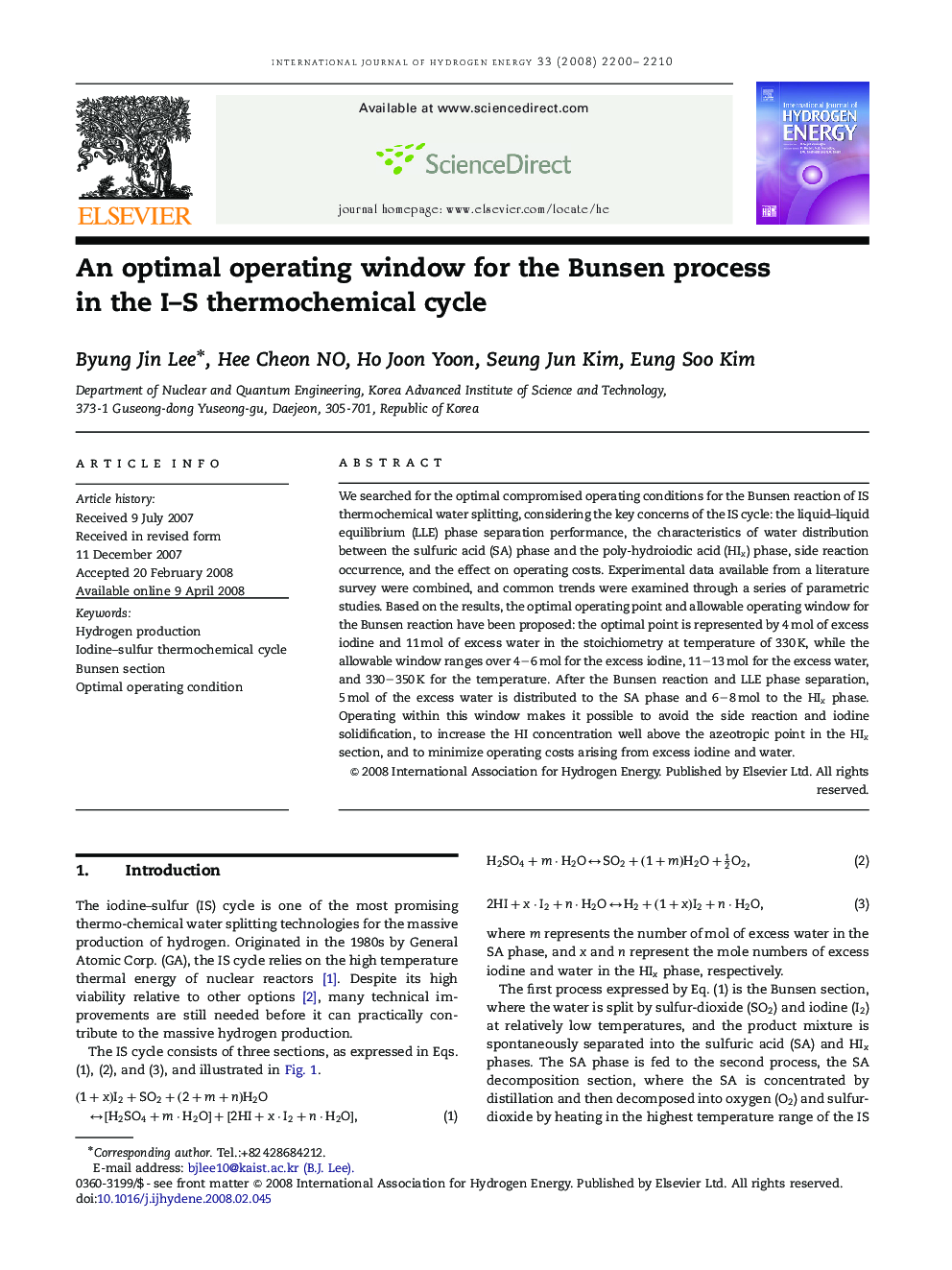| Article ID | Journal | Published Year | Pages | File Type |
|---|---|---|---|---|
| 1281627 | International Journal of Hydrogen Energy | 2008 | 11 Pages |
We searched for the optimal compromised operating conditions for the Bunsen reaction of IS thermochemical water splitting, considering the key concerns of the IS cycle: the liquid–liquid equilibrium (LLE) phase separation performance, the characteristics of water distribution between the sulfuric acid (SA) phase and the poly-hydroiodic acid (HIxHIx) phase, side reaction occurrence, and the effect on operating costs. Experimental data available from a literature survey were combined, and common trends were examined through a series of parametric studies. Based on the results, the optimal operating point and allowable operating window for the Bunsen reaction have been proposed: the optimal point is represented by 4 mol of excess iodine and 11 mol of excess water in the stoichiometry at temperature of 330 K, while the allowable window ranges over 4–6mol for the excess iodine, 11–13mol for the excess water, and 330–350K for the temperature. After the Bunsen reaction and LLE phase separation, 5 mol of the excess water is distributed to the SA phase and 6–8mol to the HIxHIx phase. Operating within this window makes it possible to avoid the side reaction and iodine solidification, to increase the HI concentration well above the azeotropic point in the HIxHIx section, and to minimize operating costs arising from excess iodine and water.
